Meet your 2024 Speakers!
Speakers are organized alphabetically by first name
Still need to register? You can join the summit here.
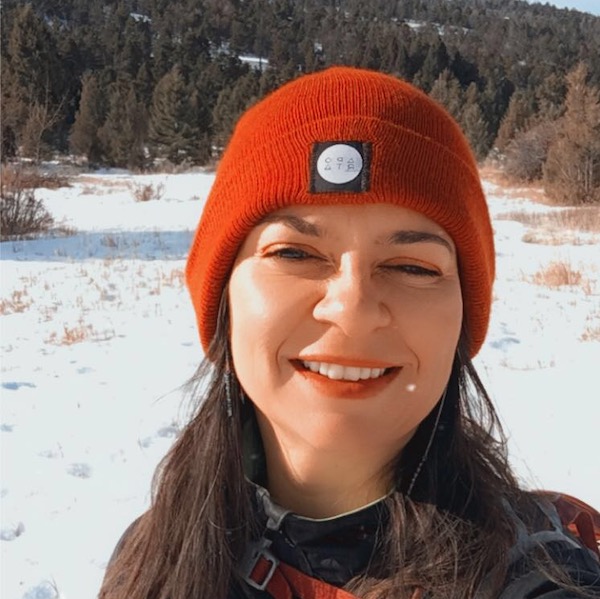
Angela Tempo
Enjoying the Night Sky in Yellowstone National Park
Angela is a naturalist and photographer who specializes in the GYE (Greater Yellowstone Ecosystem) and night sky photography. She graduated from Boston University with a bachelor's degree in journalism and social communications, a master's in photojournalism from the same institution, and a master's in public relations from Kent State University. Before Angela moved to Yellowstone, she worked at Georgetown University in Washington, D.C. She also works as a first responder with FEMA, deploying around the world when natural disasters strike.
In Angela's free time, you'll find her rafting, painting, and hiking with her dog. She currently lives in Gardiner, MT, allowing her to immerse in the area year-round and keep learning about Yellowstone National Park, Grand Teton National Park, and surrounding public lands.
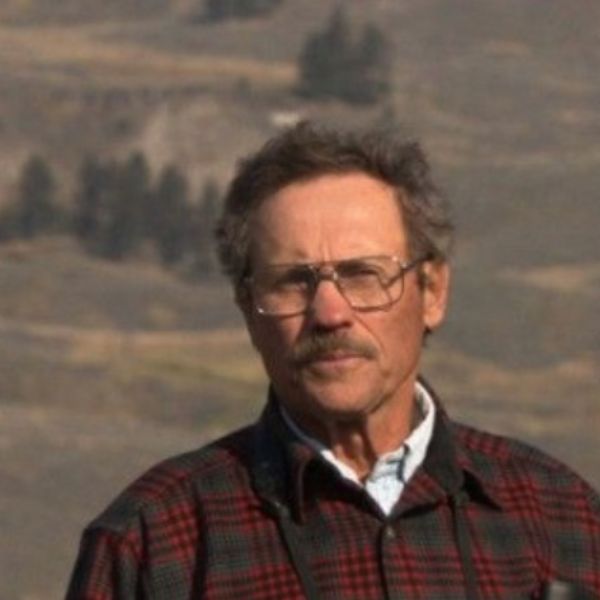
Bob Landis
Ravens of Yellowstone
Bob Landis has been filming wildlife in Yellowstone and Denali National
Parks since 1965. In the past 30 years he has filmed and produced over
20 documentaries, including titles with National Geographic Television,
PBS's NATURE and BBC. He is currently coproducing a program centered on
the ravens of Yellowstone. The documentary footage being show at the
Summit is raw footage for that project obtained largely during calendar
year 2023.
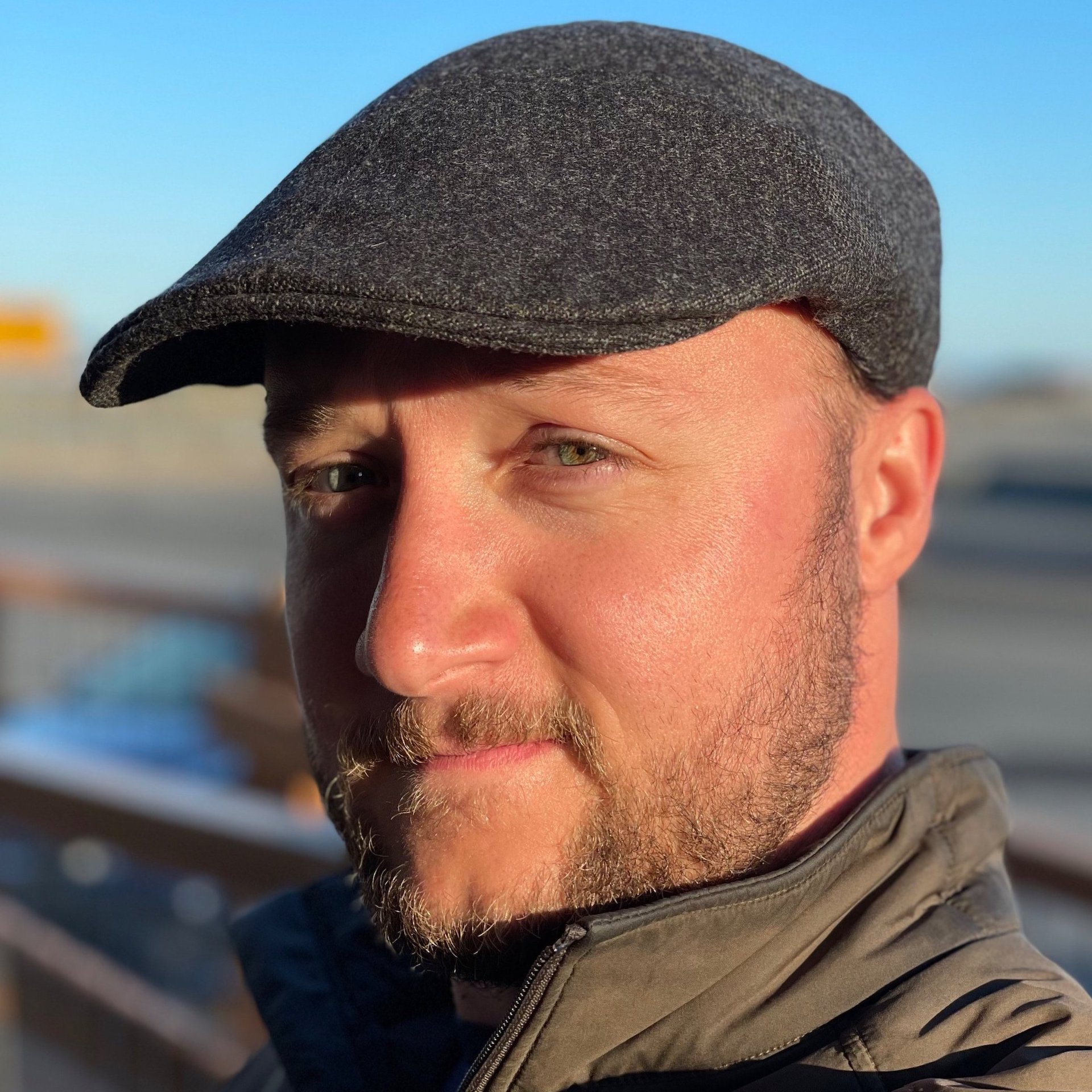
Braeden Meyer
Yellowstone Film: Chasing Otters
Braeden is a documentary filmmaker and candidate for the Montana State University MFA in Science & Natural History Filmmaking. He earned a B.S. in Biological Sciences with an Honors Baccalaureate and desires to merge his passions for the arts, sciences, and communicating prevalent issues in the natural world through compelling storytelling and films.
Inspired by a life spent in the Rocky Mountains of Montana and Wyoming, he is most at home in the outdoors and hopes to share the same interest with a broad audience through film, photography, art, and science. His interests are guided by the relationships between people, the sciences, and their impact on and interactions with the world around them.
The goal of his work is to inform the public about the unique realms of science, natural history, and everyday life that can be observed through a scientific, cinematic, and ultimately approachable experience to bridge the gap between these often separated worlds.
To view more of Braeden's work, or support his current documentary titled Thought & Memory on ravens in science, myth, culture, and oral tradition, click "Learn More".
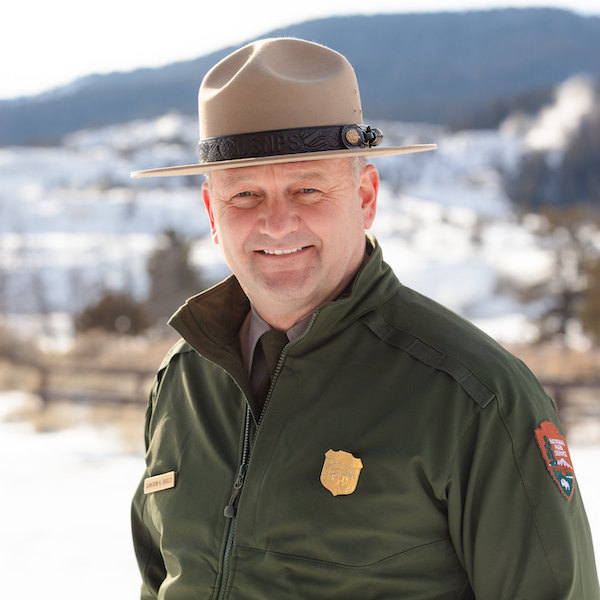
Cam Sholly
Yellowstone: State of the Park & Live Q&A
(VIP Pass)
Cam Sholly assumed duties as the Superintendent of Yellowstone National Park in October of 2018. He is a third-generation park service manager and began his National Park Service (NPS) career in 1990 in Yellowstone’s backcountry.
During his tenure, Cam's leadership has been invaluable. He oversaw the response and recovery to devastating floods in 2022, reopening 93% of the park within 20 days. During the park’s 150th anniversary, Cam led significant efforts to engage American Indian Tribes to better honor their important cultures and heritage in the Yellowstone area. He has worked with Yellowstone’s team to set new strategic priorities that focus on the Yellowstone workforce, strengthening the Yellowstone ecosystem, delivering a world-class visitor experience, investing in infrastructure, and building coalitions and partnerships. Cam is currently the Lead Partner for the Interagency Bison Management Plan Team and outgoing chair of the Greater Yellowstone Coordinating Committee, an executive group of Federal and State managers spanning three states within the Greater Yellowstone Ecosystem.
Prior to his role as Yellowstone Superintendent, Cam served in a variety of other senior leadership positions throughout his NPS career. He holds a bachelor’s degree in Management from Saint Mary’s College of California, a master’s degree in Environmental Management from Duke University and is a graduate of the Harvard University Senior Executive Fellows Program. Cam was awarded the Superintendent of the Year Award for the Southeast Region in 2011 and the Department of Interior’s Meritorious Achievement Award in 2015 for his wide-ranging executive leadership actions.
Cam has been married to Jill Walston Sholly for 27 years, and they have one college-aged son.
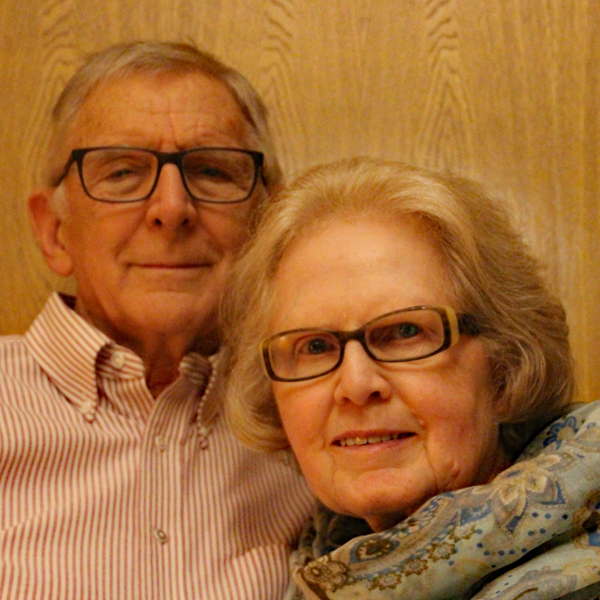
Carol Scopinich & Carl Leadaman
Explore 2 Apps about Yellowstone National Park
Carol Scopinich and Carl Leadaman both worked long careers with IBM, where they each took on a variety of development projects ranging from retail store systems to office systems to missiles. While working, Carol and Carl each lived in many places around the world - Carol in five different states as well as England and Italy, and Carl in Italy and Australia. Finally, they both ended up Texas, where they now live.
Carol has really enjoyed the various places she has lived and visited, but she always returns to Yellowstone, her favorite place. Carol introduced Carl to Yellowstone while they were still working, and they spent early visits touring the entire park, enjoying the scenery and thermal features. They later began to spend more time watching wildlife, and in an effort to learn more, they began documenting the sites they visited and places they read about in the Yellowstone Reports. Using their backgrounds in IBM development, they began to write the Yellowstone SPOTR app to share their efforts with others. This app focuses on the Sights and Panoramas Observed Traveling Roads (SPOTR). Next, they partnered with Jim Halfpenny to present his annual wolf charts digitally through the Yellowstone Wolves app.
Today, Carol and Carl still visit YNP twice a year to get revitalized by the wildlife and scenery.
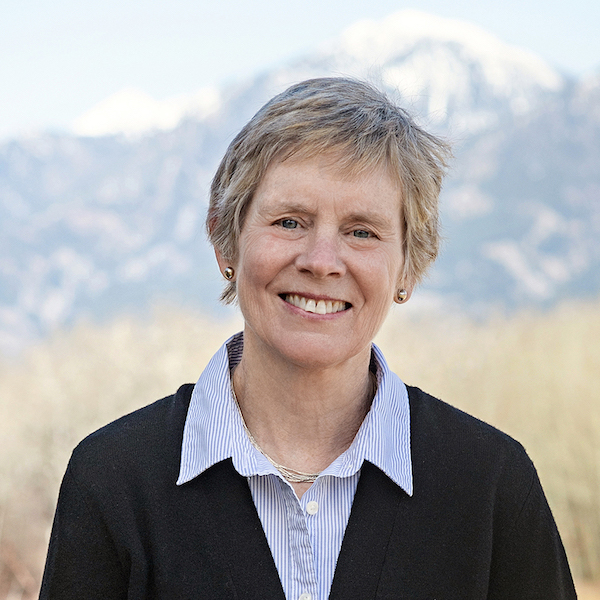
Cathy Whitlock
Cold & Hot: Yellowstone's Past, Yellowstone's Future
Dr. Cathy Whitlock is a Regents Professor Emerita of Earth Sciences at Montana State University and a Fellow of the Montana Institute on Ecosystems. Cathy is nationally and internationally recognized for her research and leadership activities in the field of climate and environmental change. Since the 1980s, she has been studying Yellowstone’s environmental history by collecting sediment cores from lakes that provide information about past vegetation, fire, and climate. This research continues to the present day in Yellowstone and in comparable mountain regions around the world. Cathy is also a lead author of the Greater Yellowstone Climate Assessment (2021) and Montana Climate Assessment (2017), which describe the impacts of past and future climate change in the region. She has received numerous awards and honors from professional societies and organizations, and in 2018, became the first person from a Montana university to be elected to the National Academy of Sciences.
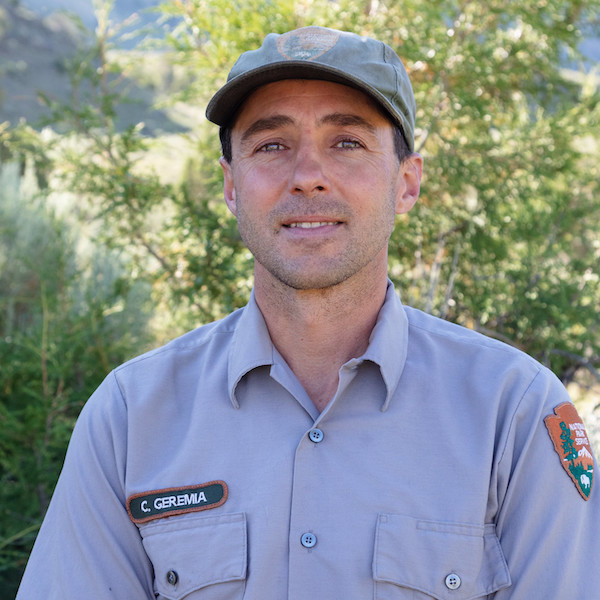
Chris Geremia
Yellowstone Bison Update
(VIP Pass)
Chris Geremia is the lead bison biologist in Yellowstone National Park. His team is responsible for conserving bison within the park, studying bison demography, genetics, and their role in engineering grassland ecosystems. The team also works to reduce conflicts that occur when bison migrate out of the park. Geremia earned his Ph.D. in ecology from Colorado State University in 2014 and has worked as a member of the Bison Program in Yellowstone since 2001.
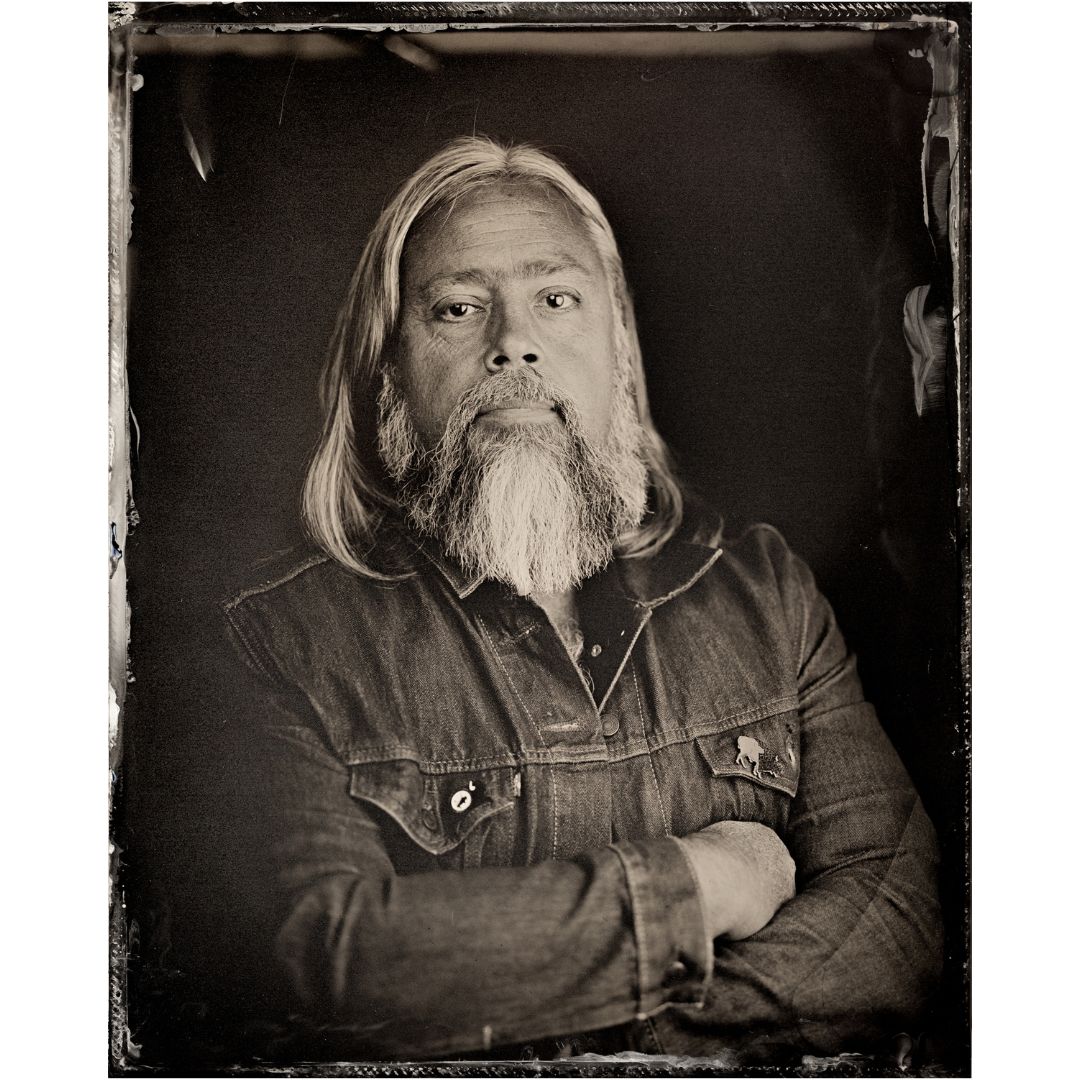
Chris La Tray
Thoughts on Yellowstone from Little Shell Tribal member and Montana Poet Laureate Chris La Tray
(VIP Pass)
Chris La Tray is a Métis storyteller, a descendent of the Pembina Band of the mighty Red River of the North and an enrolled member of the Little Shell Tribe of Chippewa Indians. For several years he has taught poetry to elementary students on the Flathead Reservation on behalf of the Missoula Writing Collaborative, and he teaches a storytelling class at the University of Montana for the Creative Writing department.
La Tray's third book, Becoming Little Shell, will be published by Milkweed Editions on August 20, 2024. His first book, One-Sentence Journal: Short Poems and Essays from the World at Large won the 2018 Montana Book Award and a 2019 High Plains Book Award. His book of haiku and haibun poetry, Descended from a Travel-worn Satchel, was published in 2021 by Foothills Publishing. Chris writes the weekly newsletter "An Irritable Métis" and lives near Frenchtown, Montana. He is the Montana Poet Laureate for 2023–2025.
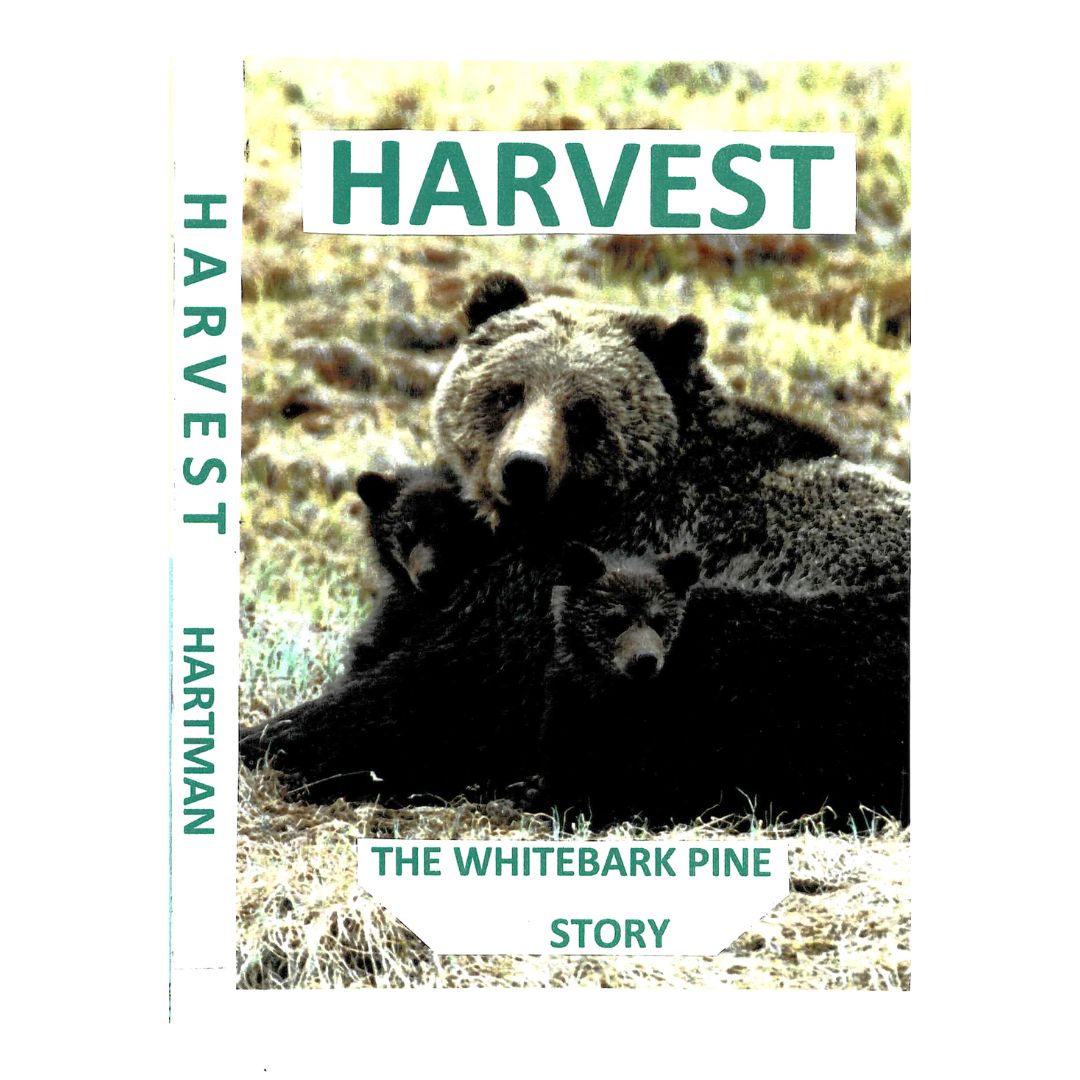
Dan Hartman
Harvest: The Whitebark Pine Story (Film)
Dan Hartman lives in a cabin in the woods in Silver Gate, MT, just outside the northeast entrance of Yellowstone. He and his wife Cindy found the cabin while exploring the area on their early photographic trips in the 1980s, and they immediately fell in love with it because of its location – and the fact that it had pine martens in the yard. For over 30 years, the little cabin has been the home from which Dan has built a remarkable career as a professional wildlife photographer.
Dan has invested long hours in the woods becoming extremely knowledgeable about the region’s wildlife, and he often guides and advises film and TV production companies who rely on his photographic and naturalist skills when filming documentaries about Yellowstone. He has collaborated and advised on numerous films and documentaries, including Planet Earth, Yellowstone Wild, The Life of Mammals, Yellowstone: Battle for Life, and the Yellowstone Park series for National Geographic.
Telling the stories behind his images is one of Hartman’s specialties, and each year he gives hundreds of presentations on the natural history of the region to Yellowstone visitors. Dan has a passion for the natural world and the region that he calls home – a passion which he aims to share with others through his photography and cinematography.
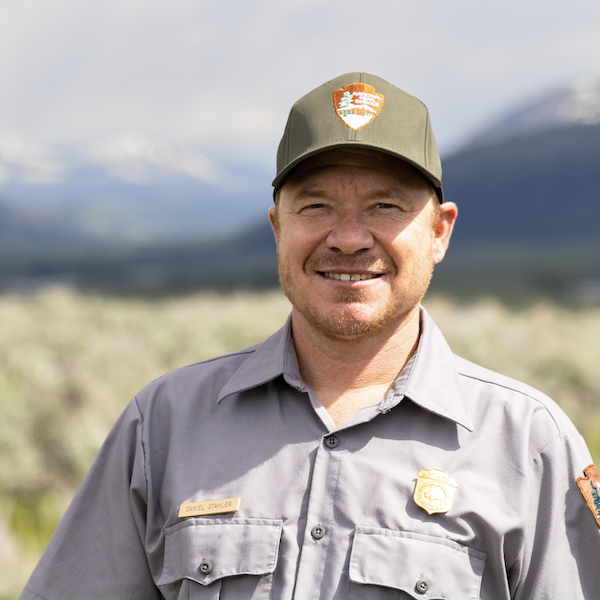
Dan Stahler
Yellowstone Wolves, Cougars, and their Prey
Dan Stahler is a Senior Wildlife Biologist for Yellowstone National Park. He first joined the Yellowstone Wolf Project over 26 years ago in 1997, has served as a lead biologist since 2002, and now serves as the Project Leader. Dan also is Project Leader for the Yellowstone Cougar Project and leads Yellowstone’s elk research program. Additionally, Dan serves as the Park’s Threatened and Endangered Species Coordinator, working with ESA compliance for threatened species like grizzly bears, Canada lynx, wolverine, whitebark pine, and other species.
Born and raised in Vermont, Dan earned a Bachelor's degree in Conservation Biology from Middlebury College. Since coming to Yellowstone, Dan received a M.S. from the University of Vermont studying Yellowstone’s predator-scavenger relationships, and a Ph.D at the University of California, Los Angeles studying population genetics, social dynamics, and behavior of Yellowstone wolves.
Stahler is responsible for coordinating Yellowstone’s multi-carnivore and multi-ungulate research programs. He has produced numerous scientific publications on predator-prey dynamics, behavior, genetics, and ecology of the Greater Yellowstone Ecosystem, and contributes many hours of lecture time on these topics for a wide variety of audiences. Recently, Dan was an editor and coauthor of the book titled Yellowstone Wolves: Science and Discovery in the World’s First National Park published by University of Chicago Press in December 2020. Dan, his wife Erin Stahler (also a biologist with the Yellowstone carnivore and elk programs), and their 9-year old son Rocco live in Gardiner, MT.
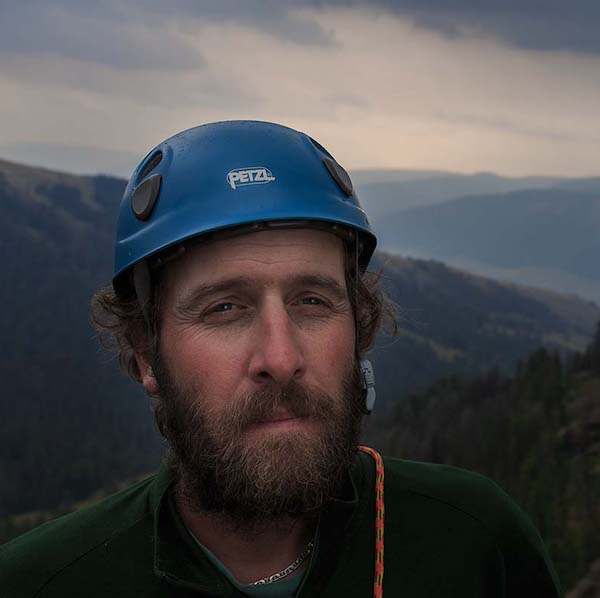
David Haines
Grand Wings: Yellowstone’s Bird Program & Golden Eagle Research
David Haines is a wildlife biologist with more than 20 years of experience studying birds. He is currently Yellowstone National Park’s Bird Program lead. He has a bachelor’s degree from California Polytechnic State University, San Luis Obispo in ecology and systematic biology, and a master’s degree from the University of Montana in wildlife biology.
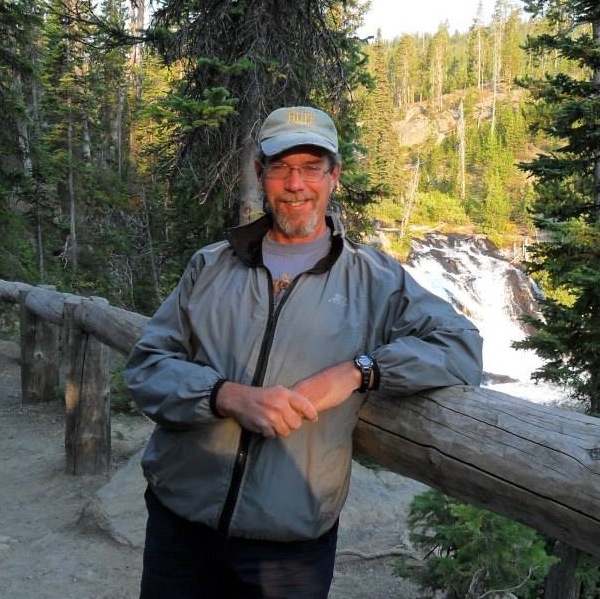
David R. Jennys
When Water Falls: Waterfalls of Yellowstone National Park
David Jennys was born and grew up in the U.S. central east coast region. While growing up, David gained a love for exploring the outdoors - where does this creek come from, what’s around a bend on the trail, how far can we see at the top of the ridge?
After high school, David joined the U.S. Air Force. Four years later, David went to college in northern Indiana, where he met his spouse, Susan. On their honeymoon, Susan introduced David to her favorite place - Yellowstone National Park, starting a love for Yellowstone in his own right. David and Susan currently live in eastern South Dakota and are exploring options on where to live after retirement. David is an ordained clergy person and is currently serving as an interim pastor in an ELCA church. David loves reading, history, strategy games, camping, hiking, and stimulating conversation.
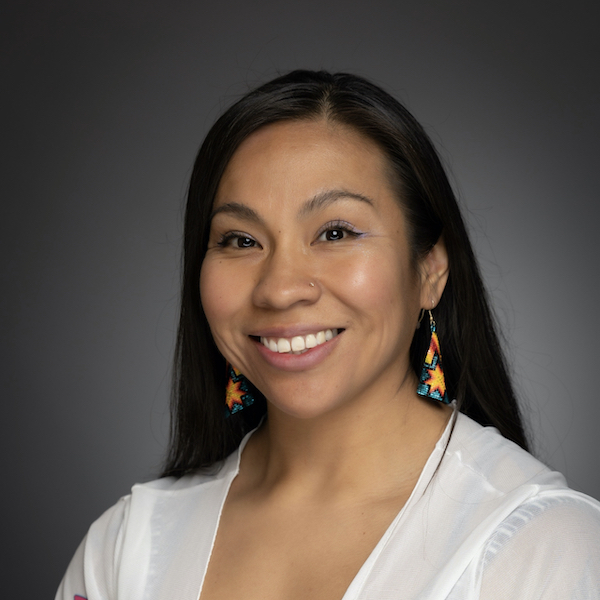
Denyse Ute
Connections to the Land: Restoring Ancestral Foods Gathering
Denyse Ute is a member of the Eastern Shoshone Tribe and is employed by the University of Wyoming Extension Cent$ible Nutrition Program. She is a co-founder of Intertribal Wellness & Indigimeals Pro. Denyse was raised in Fort Washakie, WY. She earned her Bachelor's of Science in nutrition science from Purdue University and is pursuant of achieving a Master's degree in food science and human nutrition at the University of Wyoming. Her professional goals include getting licensed as a registered dietician and creating sustainable culturally relevant health programs. Denyse loves fitness, cooking, traveling, spending time with her family, and helping people achieve their goals.
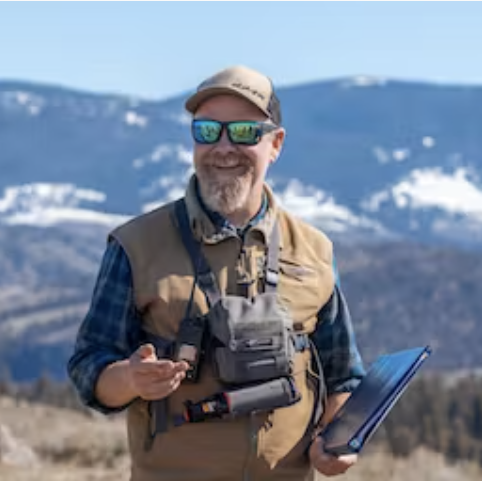
Emil McCain
What's Up With Yellowstone Wildlife? Live Q&A (VIP Pass)
Emil was raised on a remote ranch in the mountains of southern Colorado, where from a very early age he developed a deep interest in the wildlife and wild places around him. As a child growing up in a wilderness environment, he spent much of his youth exploring the natural world and taught himself to track and observe the wildlife in the mountains and forests near his home. Emil earned a Bachelor´s degree in biology with an emphasis in ecology from Colorado College. He studied carnivore ecology on campus and abroad, and in 1997 he began formal field research in Costa Rica with leading jaguar scientists. Shortly after college he studied mountain lions in Yellowstone National Park, and gained valuable first-hand experience with Yellowstone´s amazing wildlife. Emil then spent an instrumental winter snow-tracking wolves through the Northwoods of Michigan, before attending graduate school to earn a Master´s of Science degree in Wildlife Conservation and Management from Humboldt State University. His graduate studies included five years of field research on mountain lion feeding ecology. Emil has authored many scientific publications and educational articles and taught courses on traditional and modern animal tracking.
Emil´s work to study and conserve wild carnivores has taken him to many unique locations throughout North and Central America, Europe, Southern Africa and the Saharan Deserts of Morocco. Prior to returning to Yellowstone, he spent five years working for the European Union on the reintroduction and conservation of the Iberian lynx, the world´s most endangered wild cat, in the Sierra Morena Mountains of Spain and Portugal. Emil is current the owner of Yellowstone Wild at the park's north entrance.
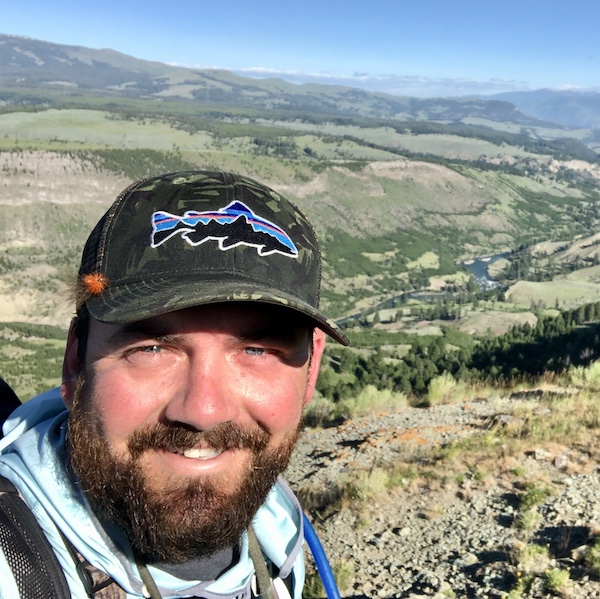
Evan Stout
Preventing Bear Conflicts on Yellowstone's Doorstep: Bear Awareness Gardiner
Evan Stout has been guiding all over North America in many different capacities for over 20 years. He has been living in Gardiner and guiding wildlife watching tours since 2015. He also organizes Bear Awareness Gardiner, a small group under the Bear Creek Council umbrella, working to prevent and minimize bear conflicts with humans in and around Gardiner. He currently owns his own guide service providing naturalist wildlife watching tours, fly-fishing, and overnight backpacking trips into the Yellowstone wilderness.
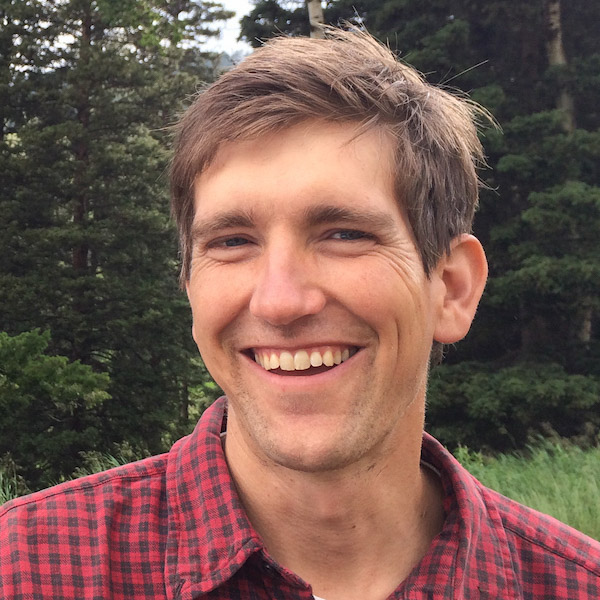
George Bumann
Sculpting in Yellowstone: From Inspiration to Bronze
George Bumann is a naturalist, artist, educator, animal language expert and the creator of the online course Eavesdropping on Wild Conversations: Decoding the Secrets of Animal Language for Ultimate Wildlife Encounters. A gifted educator and public speaker—where his award-winning animal impersonations have been a featured highlight—George has helped tens of thousands of people of all ages learn how to enjoy the wonders of animal language and deepen their knowledge and appreciation of the natural world. He has distilled a lifetime of wildlife study into a simple, easy approach to understanding the signals wild animals are continually sending.
Over several decades observing wildlife in the field, George has had the opportunity to come to know–and depict in his bronze sculptures–individual wild animals for periods of weeks, months, years, and in some cases across multiple generations. George’s art and education programs have been featured in major media outlets including the Washington Post, Canadian Broadcasting Corporation (CBC), Travel Channel, Discovery Channel, and Tedx Bozeman. His wildlife sculptures can be found in museums across the United States and in private collections around the world.
George lives at the north entrance to Yellowstone National Park with his wife Jenny Golding, son George, and black Labrador Hobbes where they enjoy wildlife watching, hiking, backpacking, and canoeing.
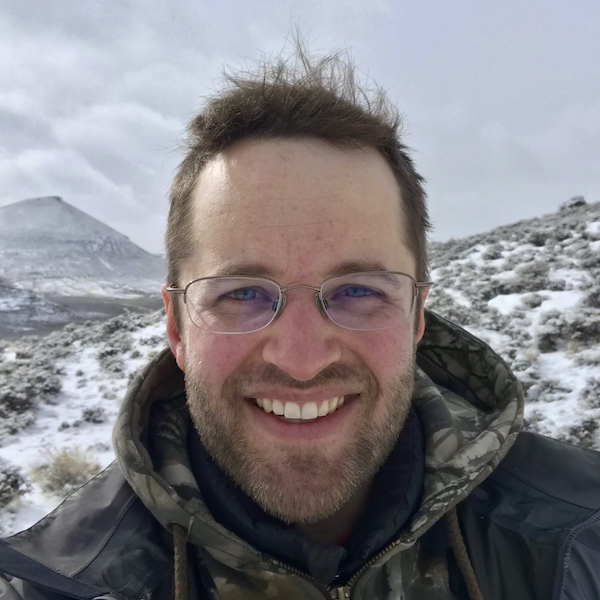
Gregory Nickerson
Ungulate Migrations of the Greater Yellowstone Ecosystem
Greg Nickerson is a writer and filmmaker for the Wyoming Migration Initiative at the University of Wyoming, a collaborative project to map all of the state's ungulate migrations and share science with the public. Originally from Big Horn, Wyoming, he evacuated from Yellowstone during the great fires of 1988.
Trained as a historian, Greg was assistant producer of "Drawn to Yellowstone," a PBS documentary on Thomas Moran's art that inspired the creation of the park. He also contributed to "Wild Migrations: Atlas of Wyoming's Ungulates" and directed the film "Animal Trails: Rediscovering Grand Teton Migrations." Outside of his work, Greg maintains his connection to Yellowstone by hunting elk in the Absaroka Range each November.
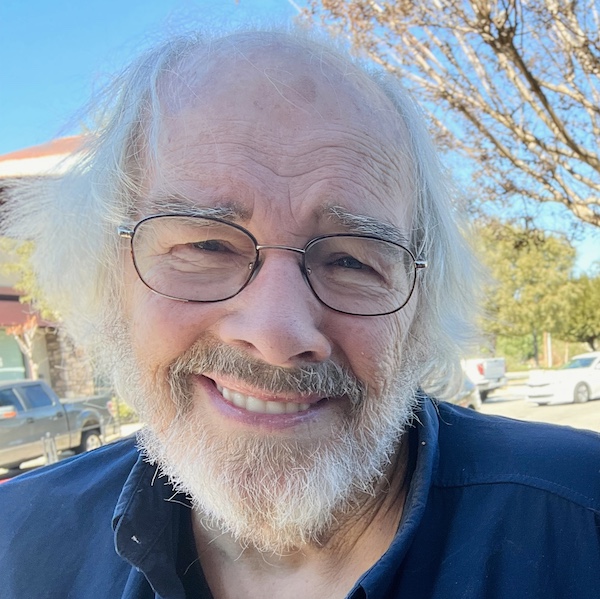
Jack Horner
Dinosaurs in Yellowstone
Jack Horner is a severely dyslexic dinosaur paleontologist, born and
raised in Montana! He attended the University of Montana for seven years without receiving a degree. He has since received three honorary
doctorates of science and a plethora of awards including a MacArthur
Fellowship and the Romer-Simpson Medal from the Society of Vertebrate Paleontology.
Jack was Research Scientist at Princeton University for seven years, and Curator and Regent’s Professor of Paleontology at Montana State University in Bozeman, Montana for 34 years. He has more than 320 publications including 10 books. Jack was the scientific advisor on all of the Jurassic Park /Jurassic World movies. He is currently a Presidential Fellow at Chapman University in Orange, California, where he has taught in the honors program for the past seven years. Jack lives in Orange, California.
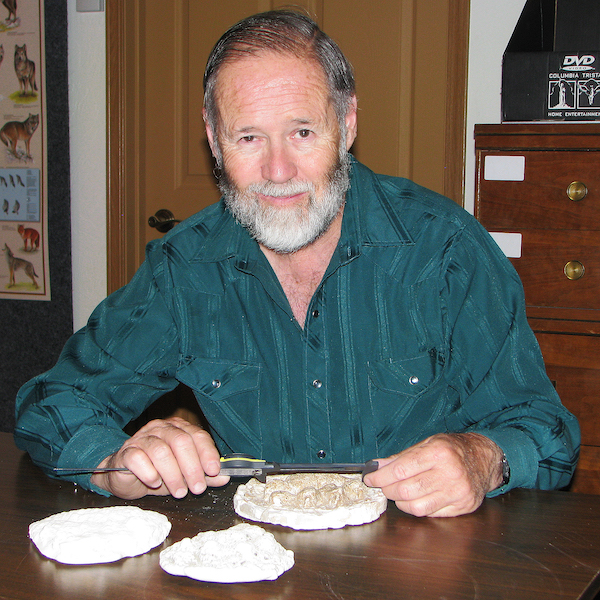
James Halfpenny
The Last Cold: Yellowstone Story
Dr. Jim Halfpenny is a long-time resident of the Greater Yellowstone Ecosystem but explorer of all regions cold - latitudinal, altitudinal and seasonal. He is author of Winter: An Ecological Handbook and over 30 books on tracking, wolves, and bears. As a scientist educator Jim has taught hundreds of classes across the world but especially in Yellowstone. He is president of A Naturalists World, LTD, in Gardiner, MT, which houses probably the world's largest forensic wildlife tracking museum. Jim was a Research Fellow of the Institute of Arctic and Alpine Research and has worked in polar regions for over five decades. He knows cold.
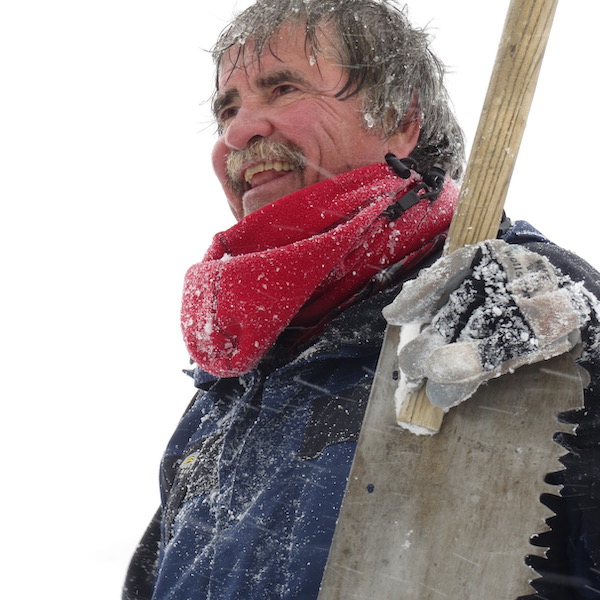
Jeff Henry
John Colter in Yellowstone
Jeff's mom and dad first brought him to Yellowstone when he was six months old. He arrived to work in Yellowstone on May 25, 1977, and has been here ever since. Over the years, Jeff has worked at a wide variety of jobs in the park, including fishing guide on Yellowstone Lake, snowcoach driver, wildlife researcher, and park ranger, but his longest tenured and favorite job has been that of winterkeeper. Jeff has spent 46 winters clearing snow from the roofs of park buildings to prevent their collapse under winter's weight. He is known for being a lover of snow and cold - the snowier and colder (and windier) the better.
While working throughout the park, Jeff’s primary livelihood has been freelance photography. He began shooting professional quality photos in the late 1970s and accumulated a library of over a quarter million color slides, which he now has cataloged and filed in his home office. He has had photos published in virtually all the major environmental and news magazines.
Jeff loves wild places and wildlife, and he is a passionate historian, especially of the American West and most especially of all things Yellowstone. The many books that he has written and/or illustrated include The Yellowstone Winter Guide; The Year Yellowstone Burned: A 25 Year Perspective; Old Faithful Inn: Crown Jewel of National Park Lodges (coauthored with Karen Reinhart); Yellowstone National Park: The First 150 Years; Snowshoes, Coaches and Cross Country Skis: A Brief History of Yellowstone Winters, and many others. Jeff is grateful for the unique perspective into Yellowstone he has developed over his many years here, and for all the wonderful people he has met in Yellowstone.
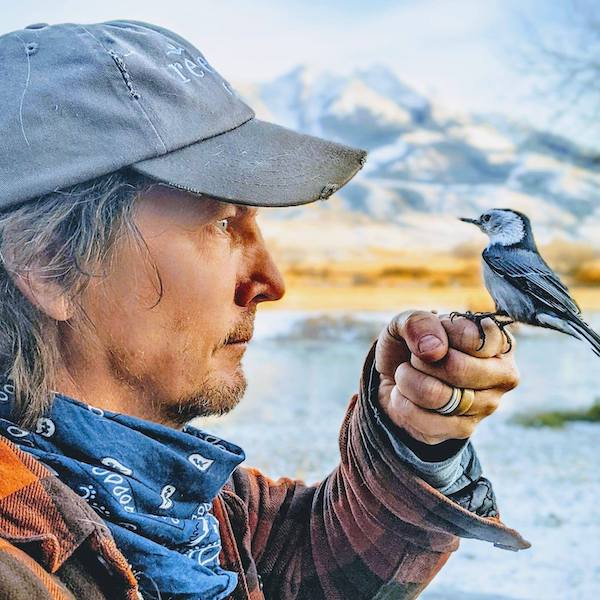
Jeff Reed
Wild Migrations of the Greater Yellowstone Ecosystem
Dr. Jeff Reed was born and raised in the Greater Yellowstone Ecosystem in southwest Montana and owns Reedfly Farm in Paradise Valley, Montana. With a Ph.D. focused on linguistics, he spent 30 years in the technology industry, working on software and hardware solutions for enterprises, including artificial intelligence solutions for Microsoft, Google and Amazon. He now builds AI-infused camera and acoustic technology used by biologists, conservationists, and private landowners for conservation monitoring, security, and co-existence objectives.
Jeff focuses much of his free time interacting with wildlife, working on his paleo-skills, researching animal communication via computational linguistics, and living as part of nature. He is an executive committee member of the Upper Yellowstone Watershed Group and Wild Livelihoods, promoting the co-existence of people and wildlife…though he considers people wildlife, too!
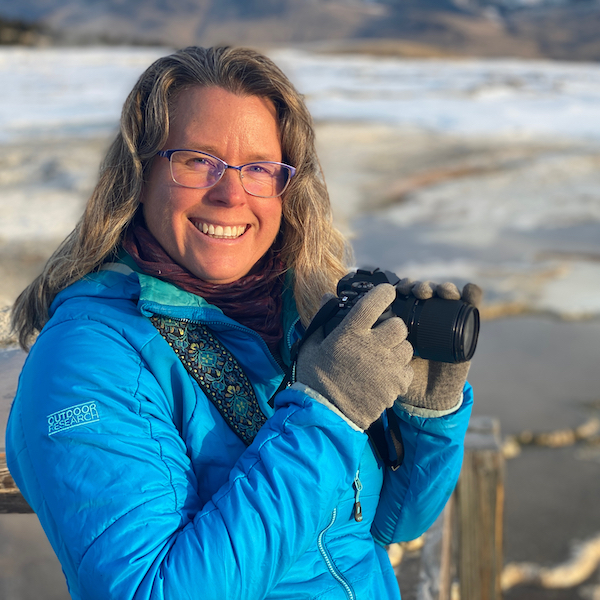
Jenny Golding
Hiking Home: 200 Miles through Greater Yellowstone
Jenny Golding is a writer, photographer, and founding editor of the mission-focused online education community A Yellowstone Life. After more than 20 years directing education and conservation programs for nonprofits, Jenny now creates and produces online stories and programs that help people form deep relationships with nature, Yellowstone, and the more than human world. Jenny's writing and photography have appeared in hundreds of digital and print articles for regional nonprofits and businesses.
She started her Yellowstone career as campus manager of the Lamar Valley Buffalo Ranch and ultimately Director of Education for the Yellowstone Association Institute prior to founding A Yellowstone Life. Jenny now serves as executive editor; writing, photographing, and creating video stories about wildlife and Yellowstone, as well as producing online programs and events like the Yellowstone Summit.
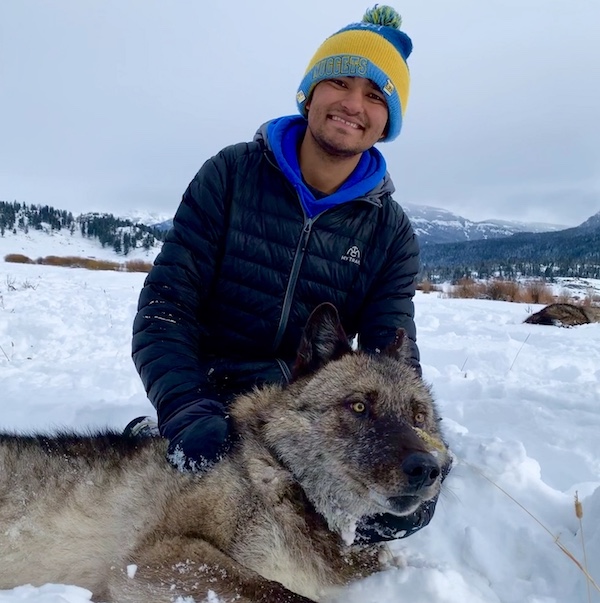
Jeremy SunderRaj
Yellowstone Wolf Update
Jeremy SunderRaj is a biological science technician for the Yellowstone Wolf Project and has been with the program for four years. He grew up in Denver, Colorado. Prior to graduating from high school, he spent his summers working in the park and observing animals in his free time. He received his B.S. in Wildlife Biology from the University of Montana in 2014 and was awarded wildlife biology student of the year. Before returning to Yellowstone, he spent three summers trapping and radio-collaring wolves for Montana Fish, Wildlife and Parks and one summer conducting transect surveys for snow leopards and wolves in northern India.
Jeremy’s current position with the Wolf Project involves wolf monitoring, research, education, and management. He enjoys observing and recording the compositions of Yellowstone’s wolf packs and their interactions with each other and with other animals on the landscape; delivering educational presentations; and managing both wolves and people along Yellowstone's road corridors. Jeremy has contributed to two peer-reviewed journal articles and several popular science articles and reports. He currently lives in Gardiner, Montana.
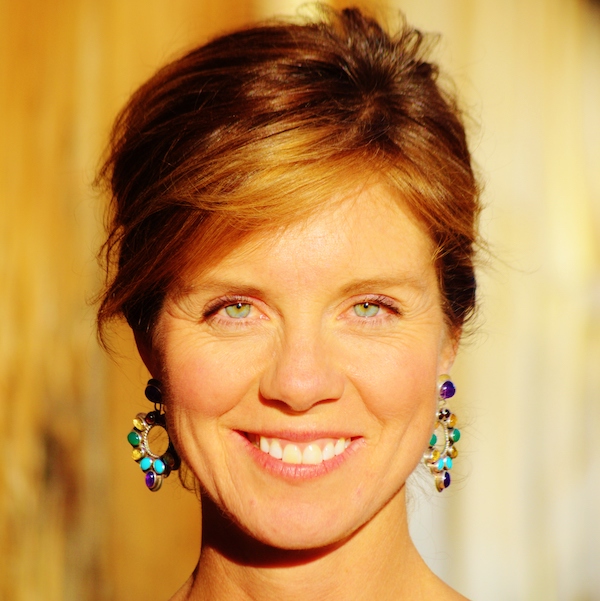
Kathryn Turner
The Greater Yellowstone Ecosystem Raised this Artist - How a Landscape Inspires Expression
The artwork of Kathryn Mapes Turner has unfolded from the mountain valley of Jackson Hole, Wyoming. As a daughter of the Northern Rockies, she was raised on the Triangle X Ranch in Grand Teton National Park, where she grew up riding the trails of the valley, learning wilderness lore and gaining an eye for landscape.
Turner began studying art in her teens from noted American painters. She then left Wyoming to attend the University of Notre Dame, majoring in Studio Arts. She spent an influential semester in Rome, Italy, and then studied at the Corcoran School of Art in Washington, D.C. She next earned a Master's degree from the University of Virginia.
Turner now travels all over the world to paint. Having been passionate about painting since childhood, Turner is now an award-winning artist nationally recognized with top honors from the American Impressionist Society, Southeastern Wildlife Exhibition and the National Academy of Equine Art. Her work has been exhibited in the National Museum of Wildlife Art, the Charlie Russell Museum, The Cowboy and Western Heritage Museum and the Leigh Yawkey Woodson Art Museum.
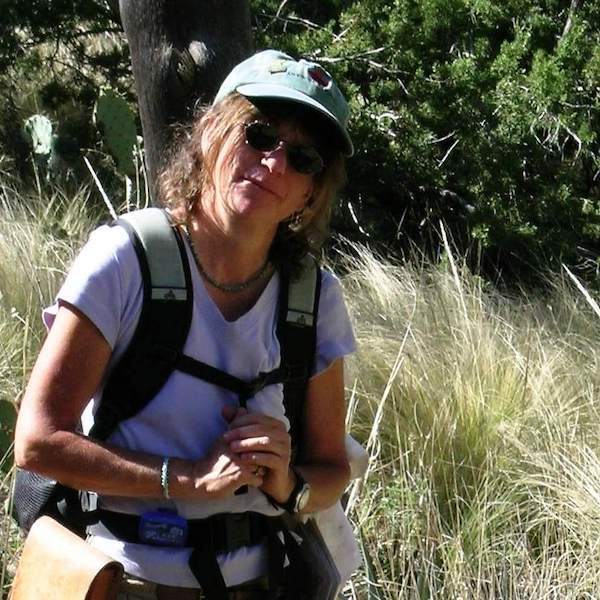
Lisa Morgan
Tracking the Yellowstone Hotspot and the Floor of Yellowstone Lake
Lisa Morgan is scientist emeritus for the U.S. Geological Survey. Her focus is on the geology and geophysics of volcanic terrains. With co-author Ken Pierce, Morgan developed major concepts and a model for development of the track of the Yellowstone hot spot, documenting the northeastward spatial and temporal progression of volcanism, faulting, and uplift along the 17-Ma Snake River Plain-Yellowstone Plateau volcanic province.
From 1999-2004, Morgan with colleagues mapped the floor of Yellowstone Lake becoming the first to recognize the complex geology present and active on the floor of Yellowstone Lake. Processes such as hydrothermal explosions, emplacement of rhyolitic lava flows, landslides, extensive hydrothermal vent fields, and active faulting contribute to the geologic framework of the lake. Presently, her research with the Yellowstone Volcano Observatory on the Yellowstone Plateau focuses on the geology and associated hazards in Yellowstone Lake.
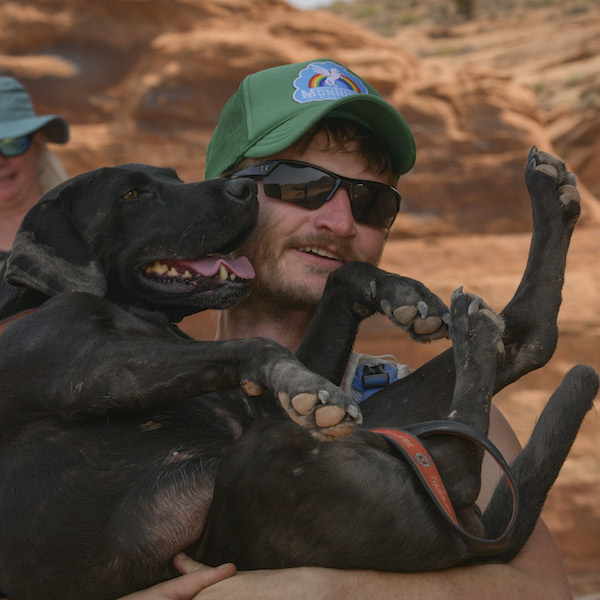
Matt C. Jackson
Yellowstone After Dark: Astrophotography in America’s First National Park
Matt C. Jackson is an astrophotographer based in Livingston, MT, where he has a gallery. His photography includes nightscape imagery of iconic locations throughout the United States, but most of his images are from the northern Rocky Mountain region, including Yellowstone National Park.
Matt moved to Montana in 2014 to complete his Ph.D. in environmental engineering at Montana State University in Bozeman. He worked with algae strains that had been isolated from extreme environments within Yellowstone National Park. As he was completing his degree, he discovered his love for photographing the night. In addition to his work as a photographer, Matt is part-owner of a biotech start-up.
Through his photography, Matt hopes to bring awareness to the rapid disappearance of dark skies around the world resulting from increased light pollution. He believes the key to making people care about the night sky is to show them the wonder it holds.
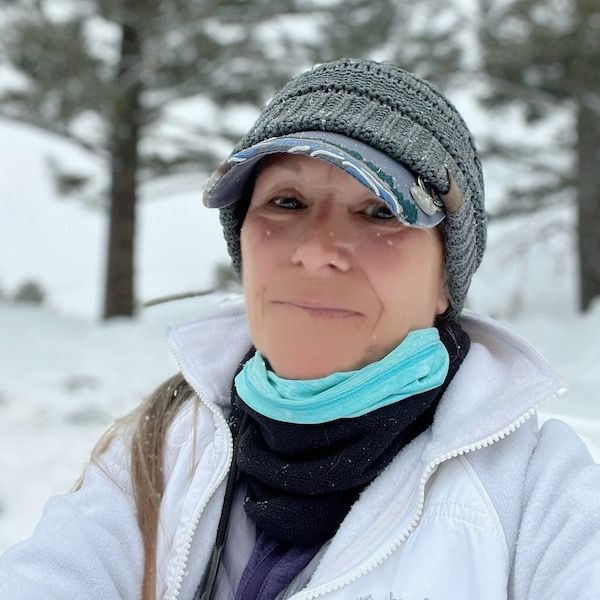
Melba Coleman
The Beauty of Yellowstone Through A Spotting Scope
Melba Coleman has an expert understanding of where wildlife are year round in Yellowstone, learned from years of experience taking wildlife videos through digiscoping. Digiscoping allows her to video wildlife without disturbing the animals, keeping a safe distance from wildlife and watching them in their natural habitat. It also allows her to help visitors watch the wildlife through her scope. Melba enjoys sharing her knowledge of how to do this with customers and visitors.
In 2008, Melba joined the National Wolfwatcher Coalition and accepted the role as their Great Lakes Regional Advisor in Michigan. There she collaborated with HSUS to stop the wolf hunt in Michigan after wolves were delisted under the Endangered Species Act.
Melba has been an authorized Swarovski Optik dealer for Optics Yellowstone LLC since 2018. Optics Yellowstone, based in Gardiner, MT, sells and rents Swarovski Optics scopes and binoculars to view wildlife in Yellowstone and surrounding areas. She continues to advocate for wolves and all wildlife in Montana.
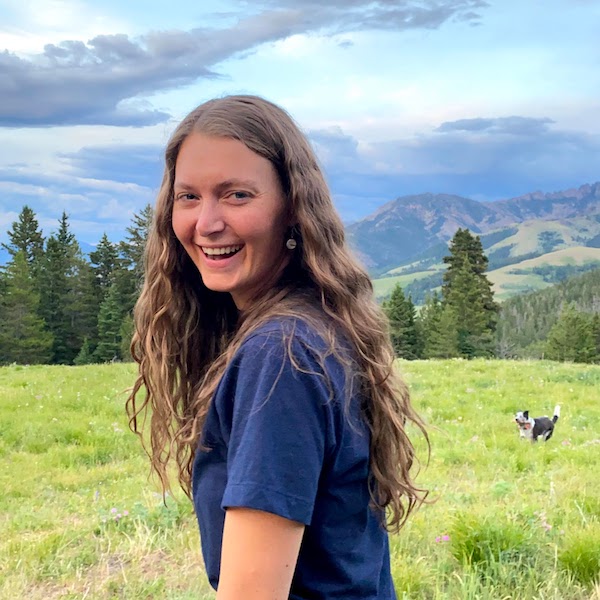
Michelle Toshack
Getting to Know Pollinators, the Flying Jewels of Yellowstone
Michelle Toshack is a dedicated ecologist and conservation professional with a passion for pollinators. She holds an M.S. in Biological Sciences with a focus on pollination ecology from Simon Fraser University in Vancouver, BC. Michelle has led numerous citizen science projects on butterflies, including the Cascades Butterfly Project in the North Cascades National Park and Adventure Scientists' Conserving Biodiversity Project across the western U.S. She is a volunteer for Yellowstone's Annual Butterfly Count.
Michelle loves exploring the Greater Yellowstone Ecosystem from her home base in Livingston, Montana. She loves running and scrambling in the mountains, growing a garden for the pollinators and the hungry humans, and playing in the snow/ice of long winters.
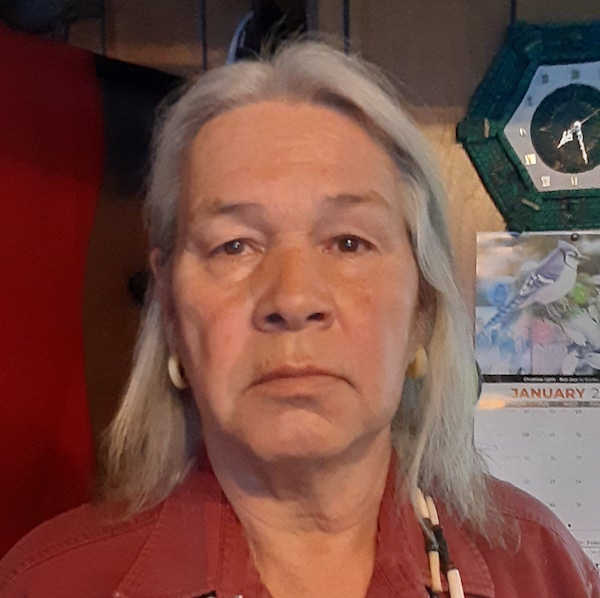
Michial Garvin
Connections to the Land: Restoring Ancestral Foods Gathering
Michial Garvin is the coordinator of the Eastern Shoshone Tribal Health “Restoring Shoshone Ancestral Food Gathering” program.
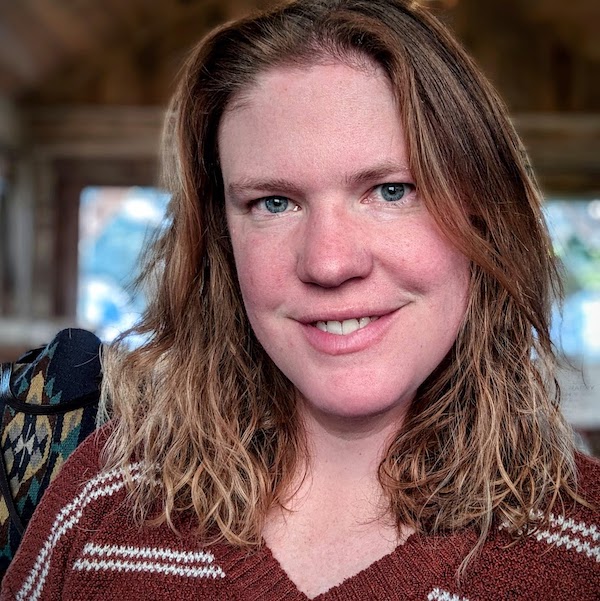
Nicole Harkness
Yellowstone Trivia!
Nicole was a naturalist guide in Yellowstone for years before settling in her rural home in Paradise Valley to admire the Greater Yellowstone Ecosystem at her own pace. She works as the Operations Manager at a unique guest ranch that connects intentional meetings with outdoor recreation, and spends her free time continuously learning and exploring the natural world.
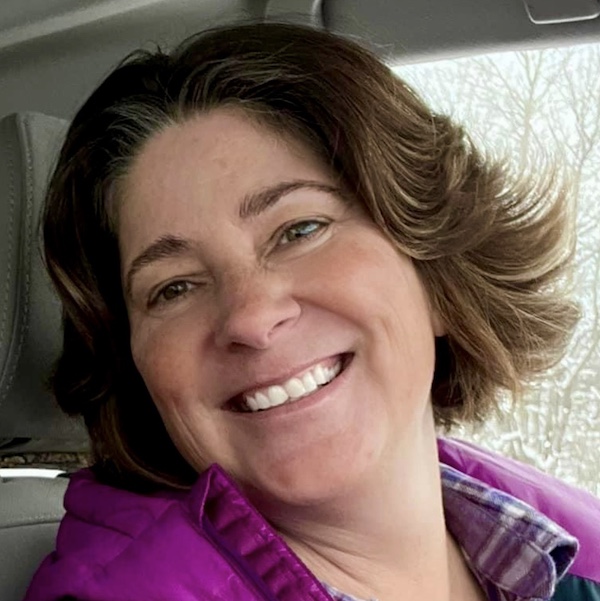
Shauna Baron
Plan Your Yellowstone Trip
Shauna Baron, M.S., is the owner of Yellowstone Trip Planning, an innovative online venue for park visitors to help them make the most of their time in Yellowstone and connect to the natural world on a deeper level. Shauna has been a Yellowstone junkie since she saw her first wild wolf while volunteering with the Yellowstone Wolf Project back in 1996, and she has been working to protect carnivores and wild ecosystems ever since. As a naturalist guide in Yellowstone National Park and published author, she specializes in creating outdoor education programs for disabled veterans and autistic youth groups. When she is not planning a trip for visitors or guiding a group, she can be found sitting on a hill watching wildlife, with a scope to her eye or book in her lap.
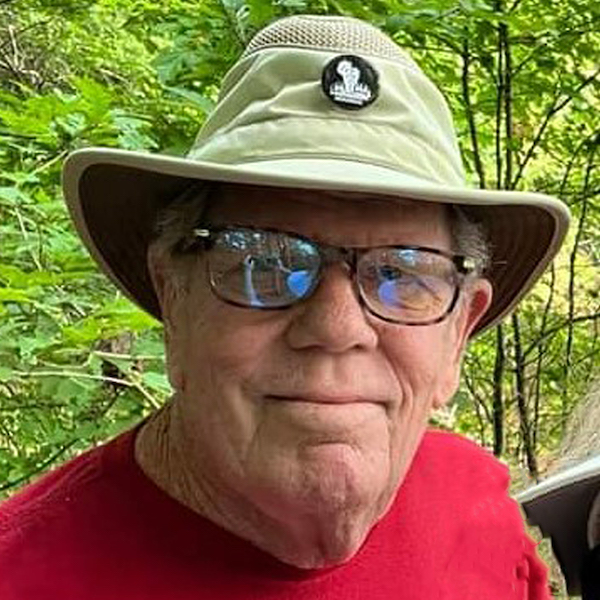
T. Scott Bryan
What's New Among Yellowstone's Geysers?
T. Scott Bryan was a seasonal employee at Yellowstone National Park from 1970 to 1977, and from 1980 through 1986, working mostly as a ranger–naturalist at Norris and Old Faithful. Scott also served as a Volunteer in Parks at Old Faithful from 1987 to 1992. He held other National Park Service positions in Glacier National Park, Death Valley National Monument, Glen Canyon National Recreation Area, and the Los Angeles Field Office.
After serving in the U. S. Navy, he received his B. S. in economic geology at San Diego State University, then his M.S. in geological sciences at the University of Montana in 1974. In addition to the summers in Yellowstone, he was a professor of geology, astronomy, and general physical sciences, and the director of the Zeiss planetarium at Victor Valley College in Victorville, California. Retired in 2001, he now lives near Tucson, Arizona.
The Geysers of Yellowstone was Bryan’s first book. He is also the author of Geysers: What They Are and How They Work and of Arizona Rocks!, several articles on the natural history and geology of the American West, and scientific journal reports. Bryan was one of the founding officers of and continues to be an associate of The Geyser Observation and Study Association (GOSA), a non–profit 501(c)(3) corporation devoted to furthering the study and understanding of geysers worldwide. In addition to his studies in Yellowstone, he has been to geyser fields throughout the contiguous United States and in Mexico, Japan, Fiji and New Zealand, and to Dolina Geizerov, the “Valley of Geysers” on the Kamchatka Peninsula of Russia, when he led the first–ever American study group there in 1991.
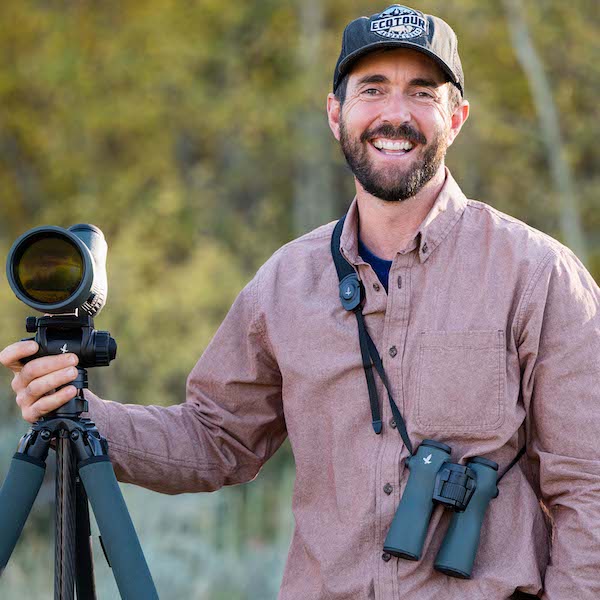
Taylor Phillips
Don't Forget about Grand Teton National Park, Yellowstone's Smaller Cousin
As an entrepreneur, Taylor became inspired to consider conservation efforts after his self-propelled trek of the 2,100 mile Appalachian Trail and a 1,900 paddle of the Yukon River from source to sea. In 2008, Taylor founded Jackson Hole EcoTour Adventures, which provides interpretative and wildlife viewing opportunities across the Greater Yellowstone Ecosystem. In 2021 he founded, in collaboration with The WYldlife Fund, WYldlife For Tomorrow, which strives to evolve the wildlife conservation funding model to include wildlife user groups other than traditional hunters and anglers.
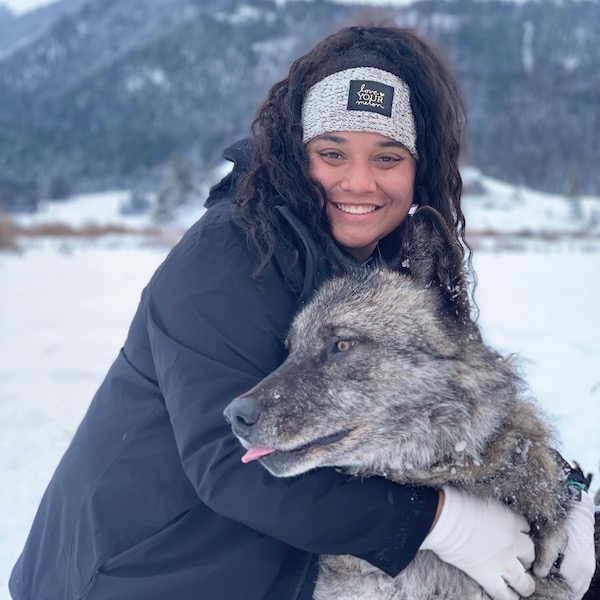
Taylor Rabe
Yellowstone Wolf Update
Taylor Rabe is a biological science technician with the Yellowstone Wolf Project. She graduated with a Zoology degree from The Ohio State University in 2018 and has studied gray wolves for the last 5 years in the Greater Yellowstone Ecosystem. Taylor spends a majority of her time on the northern range sharing wolves with visitors through her scope, while educating people on the benefits and importance of having wolves in the ecosystem. Taylor’s favorite thing about her job is showing someone their very first wild wolf; she says there’s no greater feeling in the world!
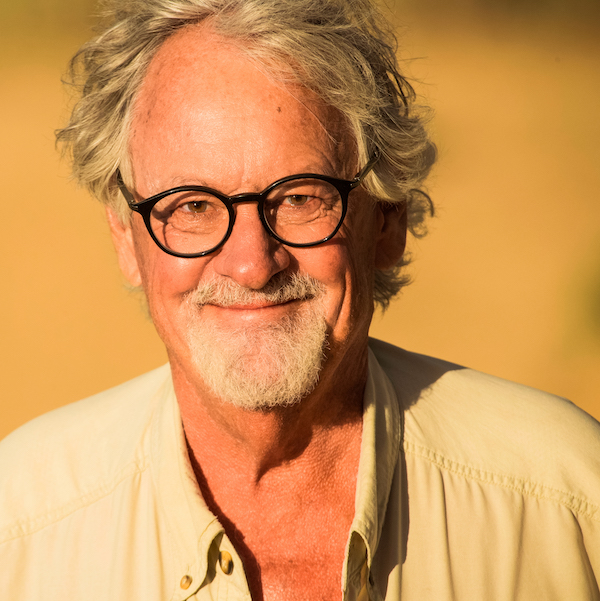
Thomas D. Mangelsen
A Nature Photographer's Journey and Insights into the Fascinating Life of Grizzly Matriarch 399 and other Grizzlies in the Greater Yellowstone Ecosystem
Legendary nature photographer Thomas D. Mangelsen has traveled throughout the natural world for more than 40 years observing and photographing Earth’s last great wild places.
Mangelsen is a critically-acclaimed photographer whose honors include being named Conservation Photographer of the Year by Nature’s Best Photography, the Wildlife Photographer of the Year by BBC, the Outstanding Nature Photographer of the Year by NANPA, one of the 100 Most Important People in Photography by American Photo magazine, and one of the 40 Most Influential Nature Photographers by Outdoor Photography. Mangelsen was featured in a full-length segment called Into the Wild with Thomas D. Mangelsen on 60 Minutes with Anderson Cooper on CBS.
A Life in the Wild, Mangelsen’s heralded traveling museum exhibition, is a 40-year retrospective of legacy images that has been showcased at more than twenty venues across the United States. Mangelsen’s award-winning limited edition images have been collected by thousands around the world through his MANGELSEN–Images of Nature Gallery locations.
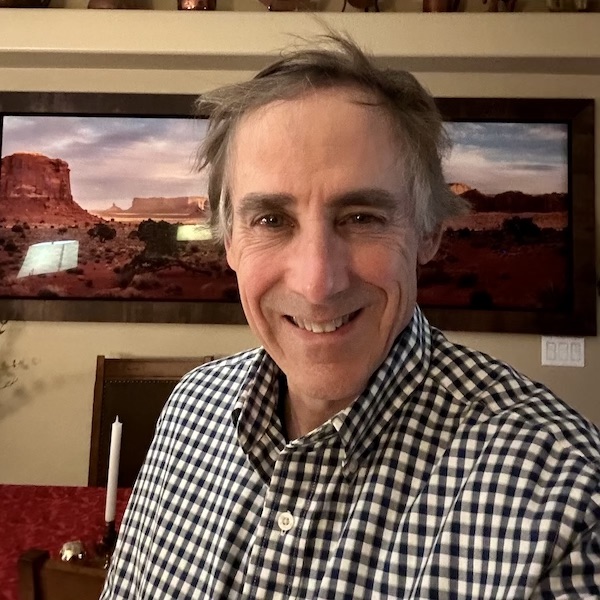
Todd Wilkinson
Wild Migrations of the Greater Yellowstone Ecosystem
Todd Wilkinson lives in Bozeman, Montana, and is considered a journalistic authority on the Greater Yellowstone Ecosystem. He has been writing about Yellowstone for more than three and a half decades and has won awards for his reporting. He is author of the recent critically-acclaimed book, "Ripple Effects: How to Save Yellowstone and America's Most Iconic Wildlife Ecosystem."
Wilkinson worked for two summers during his college years as a cook at Canyon Village in the center of Yellowstone and then got a job as a violent crime reporter for the legendary City News Bureau of Chicago. Today he is a correspondent for National Geographic and The Guardian and has contributed stories over the years to dozens of national newspapers and magazines.
Todd founded the non-profit conservation journalism site Mountain Journal, which during his tenure amassed almost 260,000 followers on Facebook. Leaving MoJo in summer 2023, he is the founder of a new project called Yellowstonian devoted to celebrating the Greater Yellowstone region and the importance of wildness in the West. He is author of several well-received books, among them "Science Under Siege: The Politicians' War on Nature and Truth," "Last Stand: Ted Turner's Quest to Save a Troubled Planet," and two books about famous Jackson Hole grizzly mother 399 that feature the amazing photography of Thomas D. Mangelsen.
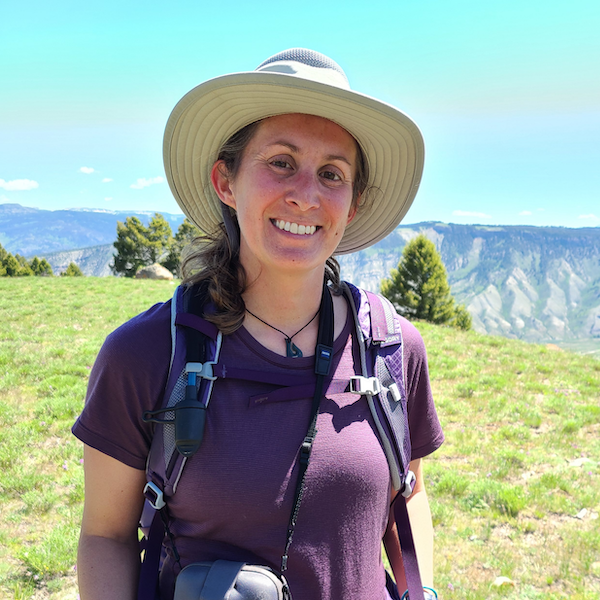
Virginia Shoup
Yellowstone Trivia
Virginia comes to Yellowstone from a long history in outdoor education and the Girl Scouts. She first worked in the park in 2012, thinking it would be just a fun one-summer job. But after falling in love with the animals, the thermals, and even the lodgepole pines, she never left! Virginia is a Certified Interpretive Guide, a Leave No Trace Trainer, and a Wilderness First Responder. She uses her degree in theater to make science and the outdoors come alive for students of all ages!
